Podríamos decir que el Tantra es un estilo de vida, basado en la filosofía hindú que en nuestro tradición proviene del Shivaismo de Cachemira.

- This event has passed.
Shivaratri: we celebrate the fifth on April 18, 2023
April 28, 2022 @ 8:56 PM – April 29, 2022 @ 9:27 PM UTC+1
1.- The fifth Shivaratri (Vaishakha) of 2023 is on April 18, a date marked in Kashmir Shaivism
1.1.- Shivaratri, feel the power of Tantra
The night of Shiva Shivaratri It is the night before the new moon (or Amavasya) of each month (or Masik), and is considered the darkest night because it comes before the beginning of the lunar cycle towards the full moon. We celebrate the fifth Shivaratri of 2023 this April 18.
During this astrological and special event for Tantra, due to the absence of the influence of the moon, the solar and masculine energies (represented by Shiva) are manifested to the maximum. This exceptional phenomenon gives us the possibility of entering into communion with Shiva (the supreme solar/masculine principle) very easily, and benefiting from his power.
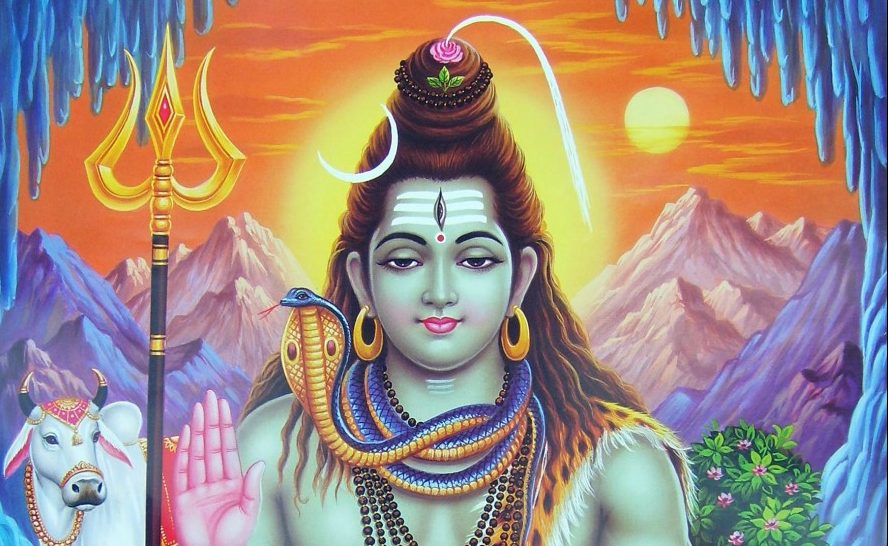
We celebrate the fifth Shivaratri of 2023 this April 18! During this night, Shiva devotees and Tantra practitioners perform chanting of mantras and pujas, deep meditations, entering states of ecstasy, enlightenment and even Moksha spiritual liberation. Worshiping Lord Shiva from your heart helps you attain salvation and grace for your whole life.
2.- The most propitious night to transfigure yourself into Shiva
In the tradition of Shivaism in Kashmir, it is also very successful for tantric aspirants to take the opportunity to do the love ritual during the night of Masik Shivaratri. It is a very auspicious moment for the spiritual and tantric couple. Aspirants can greatly benefit from the awakening and expansion of consciousness, and from a very characteristic and solar state of mental clarity. Also, men, taking advantage of this beneficial moment, can significantly increase their virility and solarity.
So we advise you to meditate with Shiva, and if it is possible to do the love ritual during the night of Masik Shivaratri, to experience what is exposed (in yourselves).
In the tradition of Kashmir Shivaism let’s celebrate the fifth Shivaratri of 2023!
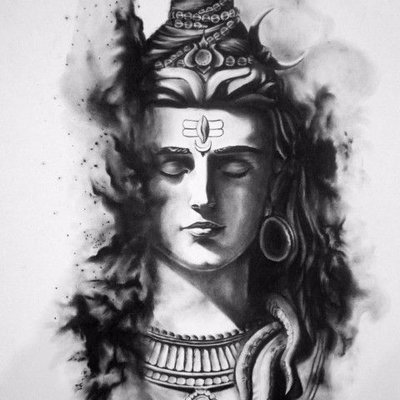
Shiva’s ice lingam at Amarnath
Whether in a Masik Shivaratri, but especially in Mahashivaratri, in addition to fasting, Shiva devotees follow this same procedure:
Whether in a Masik Shivaratri, but especially in Maha Shivaratri, in addition to fasting, Shiva devotees follow this same procedure:
2.- After that, they visit a Shiva temple (or an altar dedicated to Shiva in their home), and sing hymns, Bhajans or Mantras (to please Mahadeva, or Shiva).
3.- Honey, sandalwood, yogurt, rose water, and flowers are offered while worshiping a Shiva Lingam.
4.- Flowers, betel leaves, rice and fruits are also offered to worship the deity.
5. Incense is burned to invoke the blessings of Shiva, also known as Rudra.
6.- Shiva devotees also apply holy ash (Vibhuti or Bhasma) to their foreheads.
7.- The Om Namah Shivaya mantra is chanted throughout the day and night. This powerful mantra is said to be able to free you spiritually (and also from your previous sins).

You can find more auspicious incense to worship Shiva in our online store.
3.- The history of the Shiva Lingams and their sacred properties according to Tantra
The Shiva Lingam in this photo is located in Tanjavore, India.
The Shiva Lingams are archaic sculptural forms carved from one piece. The stone of which they are carved, was created millions of years ago, since they come from a meteorite that collided in ancient times against the earth in the Narmanda River in India. Currently, the stone of this deposit is still extracted to create new Lingams for the temples, and for other sacred forms.
Shiva Lingams are considered sacred and are associated with healing, as they activate the Chakras and the rise of Kundalini energy.
This stone symbolizes the divine union of Shiva and Shakti, as it represents the union of the opposite: the masculine and the feminine, the body and the soul.
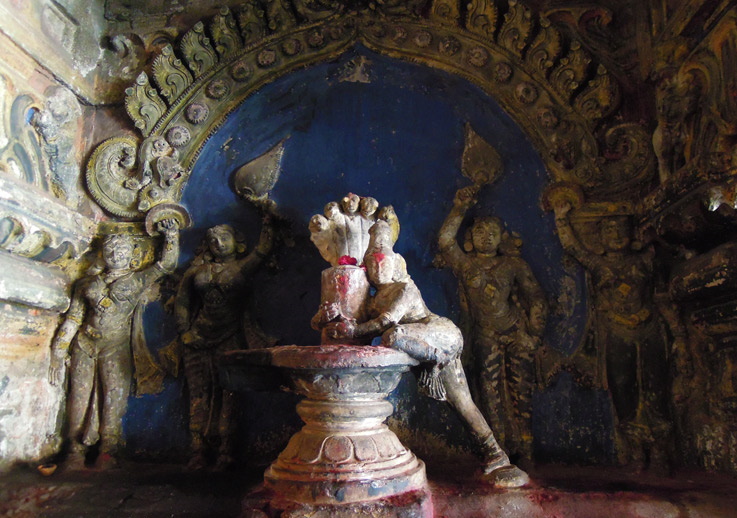
4.- Once a year the great Maha Shivaratri is celebrated
Maha Shivaratri, the main festival of Kashmir Shaivism, will be celebrated this year on Monday, February 18, from 11:44 PM to 12:31 PM on March 20. Mainland India time.
Once a year, we celebrate Maha Shivaratri, Shiva’s great night. This momentous event in Tantra is traditionally dedicated to Paramashiva (Shiva, or the Supreme Consciousness: God). Shiva’s devotees consider this night to be the most sacred of the entire year, and it is enthusiastically celebrated by all Shivaites, all over the world.
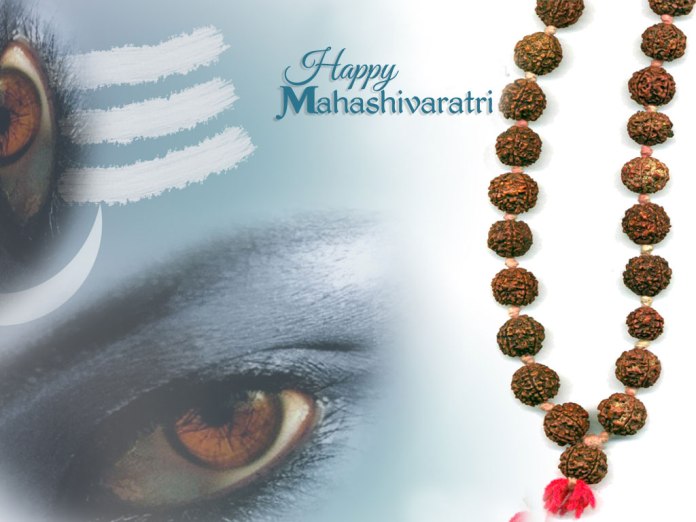
Among the twelve Shivaratri of the Hindu calendar, Mahashivratri is the one with the greatest spiritual importance. This is a day when nature pushes human beings towards their spiritual self, the true one. The importance of this celebration (which lasts all night) is to allow the energies coming from the Macrocosm to emerge in us, and in a natural way.
5.- One of the mythological stories related to Shiva
5.1.- Stories of Tantra: Shiva and Kali, and their tantric symbolism
What is the meaning of the images of Kali standing on Shiva’s chest? We narrate the story of how Kali once killed Shiva, and what this symbolizes.
This is a story that represents how the feminine dimension of energy works. Once, it happened that various demons tried to dominate the earth. Many evil forces began to take over the world. Then Kali was furious. When she went crazy, no one could stop her, so in her rampage she wiped out everything in her path.
But his unleashed fury was not going to stop. Without control, beyond reason, beyond the action necessary for that situation, beyond everything. Because her rage had gathered such momentum and was not going to let up, and because she continued to slaughter, no one dared to go and stop her. The Gods went to see Shiva and begged him:
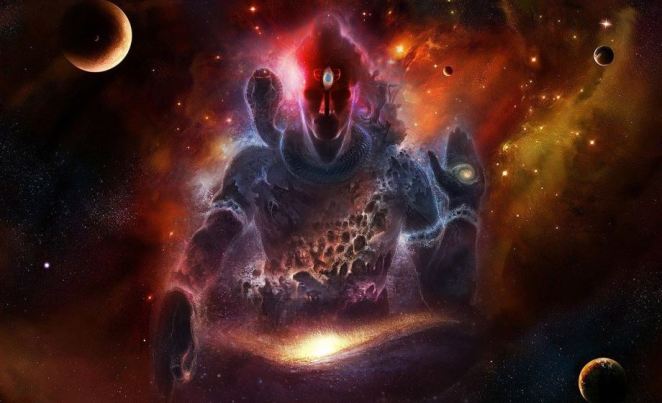
– Kali is unleashed. She is your woman. Please do something to restrain her.
Shiva gently approached Kali. He walked toward her without aggression, without seeking confrontation. But the energy and fury of Kali was such that he killed Shiva himself. Only when she stood next to him did she realize what she had done. Then he lowered his temper, and brought him back to life.
There are several tantric processes that are based on this particular event. You may have seen images and paintings of tantrics who have removed their heads and walk around with their heads in their hands. Or he may have seen a Goddess, the Devi, depicted taking off her head, holding it in her hand, or walking with it. There are various tantric processes involved where people actually “decapitate” themselves, or kill their thought process. There are practices and rituals through which this goal is achieved.
Nowadays, most people think that “Tantra” means unbridled promiscuity. Tantra does not mean promiscuity: it means extreme discipline, it means a technique, a method, an ability to undo your life and redo it again. Tantra is having such mastery over your mind that you can completely dismantle your life, and then remake it.
You can come to have such control over your life, that both life and death will be completely in your hands. You can even kill Shiva himself, and bring him back. This is not a feat that you try to show to others, it is because you really want to “wake up” to a real life, that you control and enjoy to the fullest.
Unless you have control over your mind, you will not be able to do anything. Without mastery over your mind, what can you do? The level of control you have over your thoughts determines how much you can do.
The image of Kali standing on Shiva essentially symbolizes having total control over the course of your life. That’s being bold, don’t you think? This is what Tantra offers you.
Enmanuel Torras Mata

El Shivaismo de Cachemira predica la experiencia de la realización del Ser, cuando este se identifica con “Eso”, la Conciencia absoluta. Accedemos a la experiencia de “no mente” (que es lo que significa Tantra) en la que nuestra personalidad se disuelve en la contemplación del Ser, que lo abarca todo y del que somos parte integral.